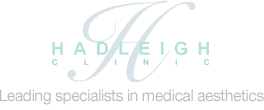- Home
- Treatments
- Aqualyx™
- Juvederm Ultra
- Sclerotherapy
- Anti-wrinkle treatment
- Laser 360
- Silhouette Soft
- Coolsculpting
- Dermal fillers
- Laser hair removal
- Skin hydration therapy
- Dermaroller
- Laser skin resurfacing
- Skin peels
- Excess sweating
- Liquid facelift
- Skin surgery
- Gel needling lift
- Obagi skin treatments
- Skin tightening
- IPL acne treatment
- Pixel™ Laser Resurfacing
- Soprano hair removal
- IPL skin rejuvenation
- Restylane
- Tear trough
- Jawline slimming
- About us
- Our clinics
- Prices
- Special promotions
- In the news
- Our blog
- Home
- Treatments
- Tear Trough
- Treatment Info
Tear Trough
Reduce the appearance of dark circles and tired eyes
Treatment Info
Dermal fillers have grown to be one of the most popular anti-ageing treatments because they provide an instant natural looking result with minimal or no down time and now they can also be used to reduce the appearance of ‘dark circles’ and ‘tired eyes’ by filling and smoothing the lower eyelid contour.
What are Tear Troughs?
Tear troughs are semi-circular creases/depressions which start at the nose and run along the bottom of the lower eyelid just above the cheek bone. These depressions can produce the illusion of darkening around the eyes resulting in ‘dark circles’ or ‘tired eyes’.
As we age, the eyelid above and cheek below begin to sag however the depression cannot sag with the rest of the facial skin due to its ligamentous attachment to the bone of the eye socket. This results in the depression deepening and the shadow and dark circle becoming more noticeable.
What is Tear Trough Treatment?
When tear trough deformities are present, an injectable hyaluronic acid dermal filler can be used to correct them. Hyaluronic acid is present in all living tissue and works by attracting water molecules to the surrounding collagen fibres resulting in plumper, hydrated skin.
Different brands of fillers
There is a huge variety of fillers currently on the market and new products are launched all the time. At The Hadleigh Clinic our priority is to only offer treatments with a high safety profile. We recommend the following brands for tear trough treatment:
Juvederm ULTRA (Hyaluronic Acid filler from Allergan)
Juvederm ULTRA is a range of 5 products (Juvederm ULTRA 2, 3, 4, Juvederm Ultra Smile and Voluma) from Allergan the manufacturers of BOTOX®. Juvederm ULTRA is a smooth gel and the first dermal filler to contain Lidocaine (local anaesthetic) to make the treatment virtually pain free.
Restylane (Hyaluronic Acid filler from Q-MED)
The Restylane Range consists of 7 products; each tailored to your individual treatment needs (Restylane Vital Light, Restylane Vital, Restylane Touch, Restylane Lipp, Restylane Lidocaine, Perlane Lidocaine and Restylane SubQ). The Restylane Range uses the patented technology NASHA (Non-Animal Stabilised Hyaluronic Acid) which has been used in over 10 million treatments worldwide.
What is the treatment like?
The filler is injected with a very fine micro needle under the skin surface along the line of the hollow. All of the dermal filler products used at our clinics contain pain-reducing lidocaine (local anaesthetic) for a comfortable treatment experience. Tear Trough Treatment can be completed in as little as 15 minutes. The treatment benefits can be seen instantly and do not affect facial expression. After the treatment the treated area may be red and/or swollen, however you can resume normal activities, drive yourself home or return to work depending on the extent of the treatment. With tear trough treatment, it is wise to choose your treatment time with care since the delicate under eye area is more prone to swelling and/or bruising than other areas of your face.
To learn more about the process (including pre and post treatment information) click here.
How long will the effects last?
One of the great advantages of the products we use in our clinics is that the effects are long lasting but not permanent – therefore you are always in control of your looks and can change you treatment depending on how you are ageing. The duration of effect depends on the product used, a person’s age, how much filler is injected, the quality of the skin as well as general health and lifestyle.
Hyaluronic acid filler used in Tear Trough area typically lasts longer (12 months or more) when compared to other areas of the face treated with filler. Repeat or touch up treatments can be performed at any time after the initial treatment.
Who is not suitable for treatment?
Dermal fillers have not been tested in pregnant or nursing women, and are therefore not advised. Patients who suffer from puffy eyes are also not suitable for tear trough treatment as hyaluronic acid in this area tends to exacerbate the problem. A full assessment of your suitability will be made at your consultation.
Are there any side effects?
Today’s dermal fillers have come a long way since the first-generation of collagen injections. Advanced injection techniques and improved product safety means that significant side effects are extremely uncommon but may include:
- Injection-related reactions: These reactions may include swelling and redness at the injection site immediately after the treatment. Such reactions are more common when treating the tear trough area in comparison with the rest of the face.
- Bruising: Occasionally bruising can occur which if significant may last 5-7 days. During this time make-up can be applied.
- Contour irregularities can and do occasionally occur. Massaging can usually smooth out any ‘lumpiness’ however if persisent the filler can be easily and rapidly dissolved using hyaluronidase
- Allergic reaction. The risk of an allergic reaction is extremely rare and they are usually self-limiting. Allergic reactions can however be treated with oral or injectable corticosteroids or the product removed using an injectable enzyme (hyaluronidase).
- Infection. As with all injections, this procedure carries a risk of infection. The syringe is sterile and standard precautions associated with injectable materials are taken.

